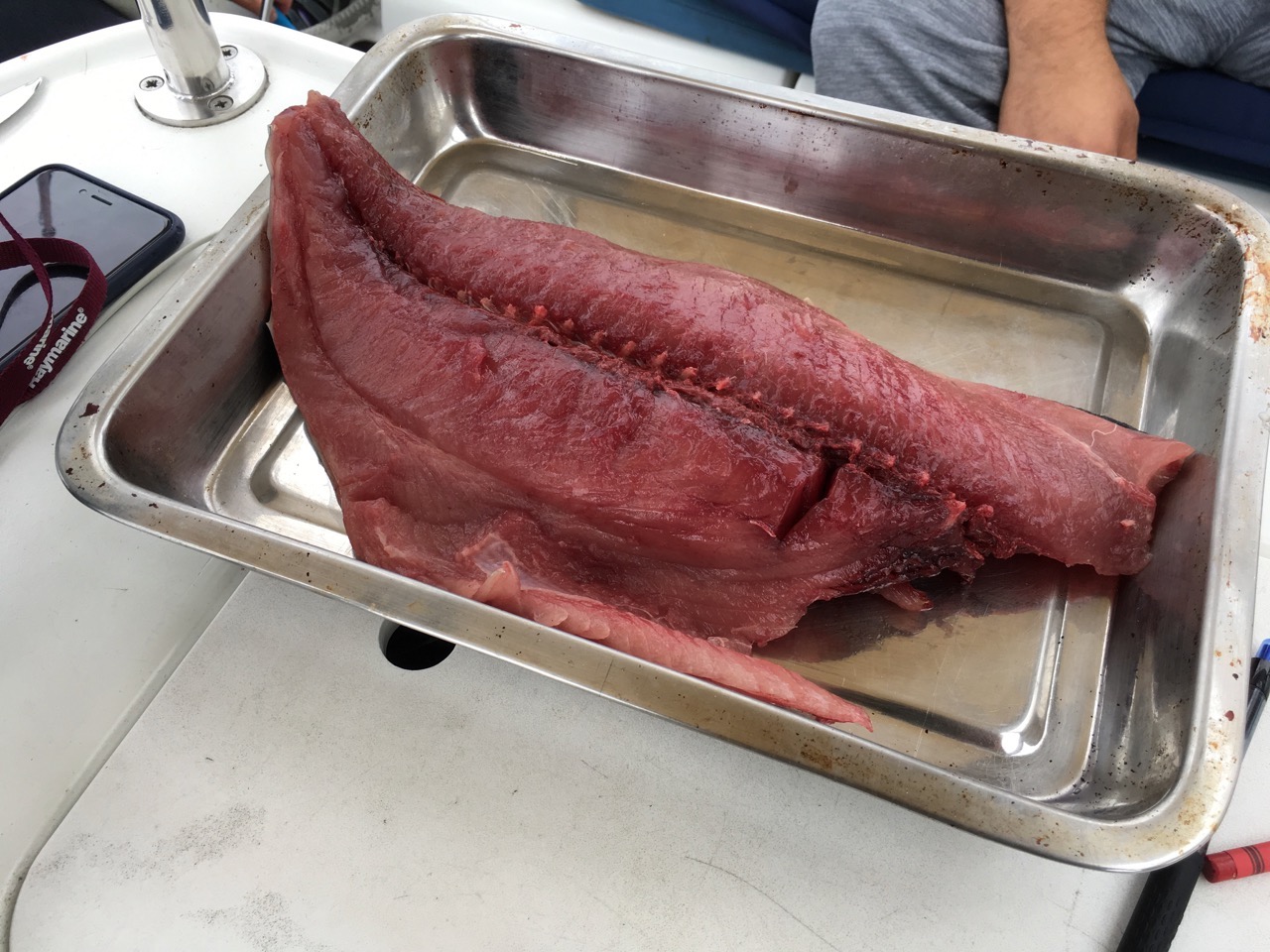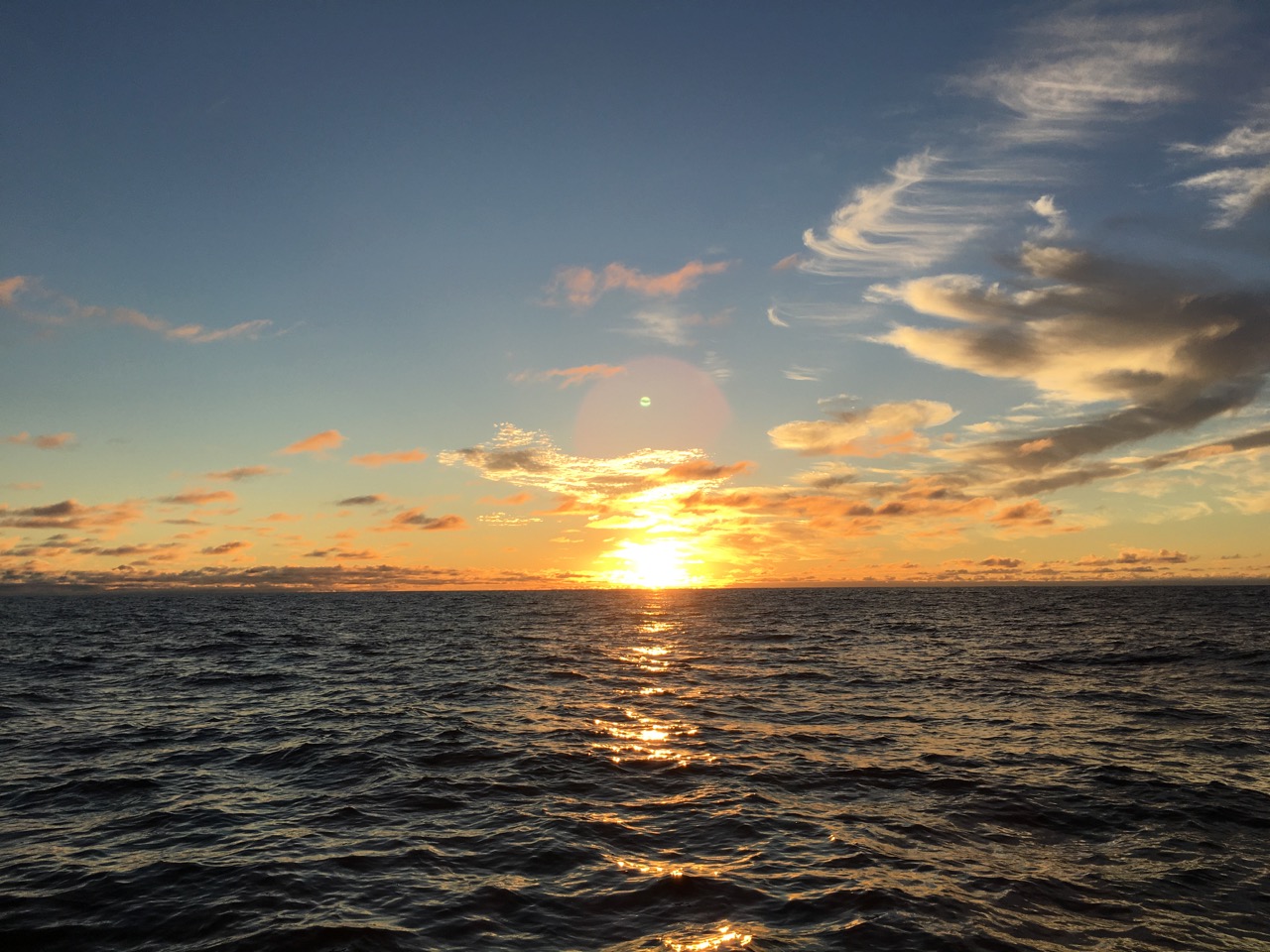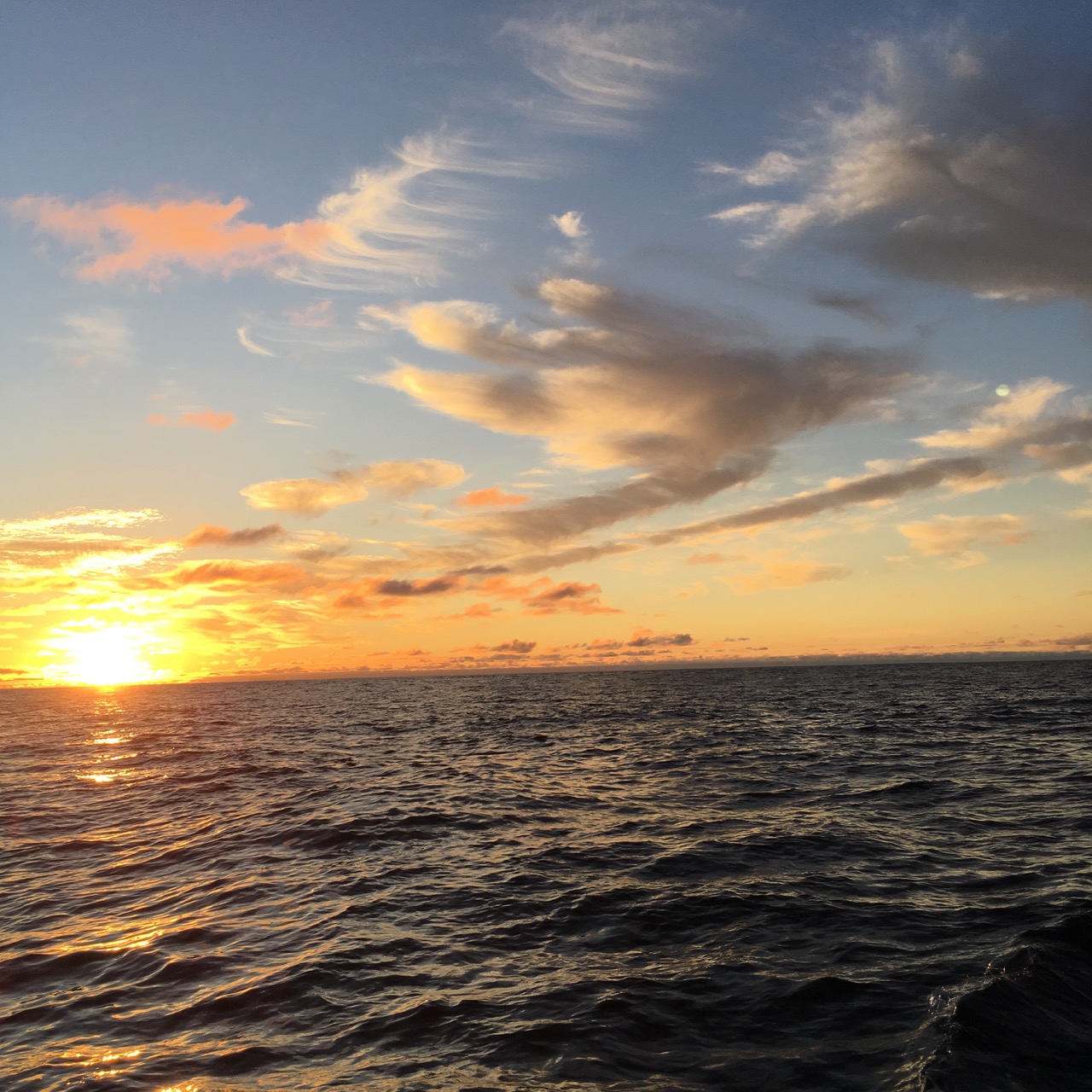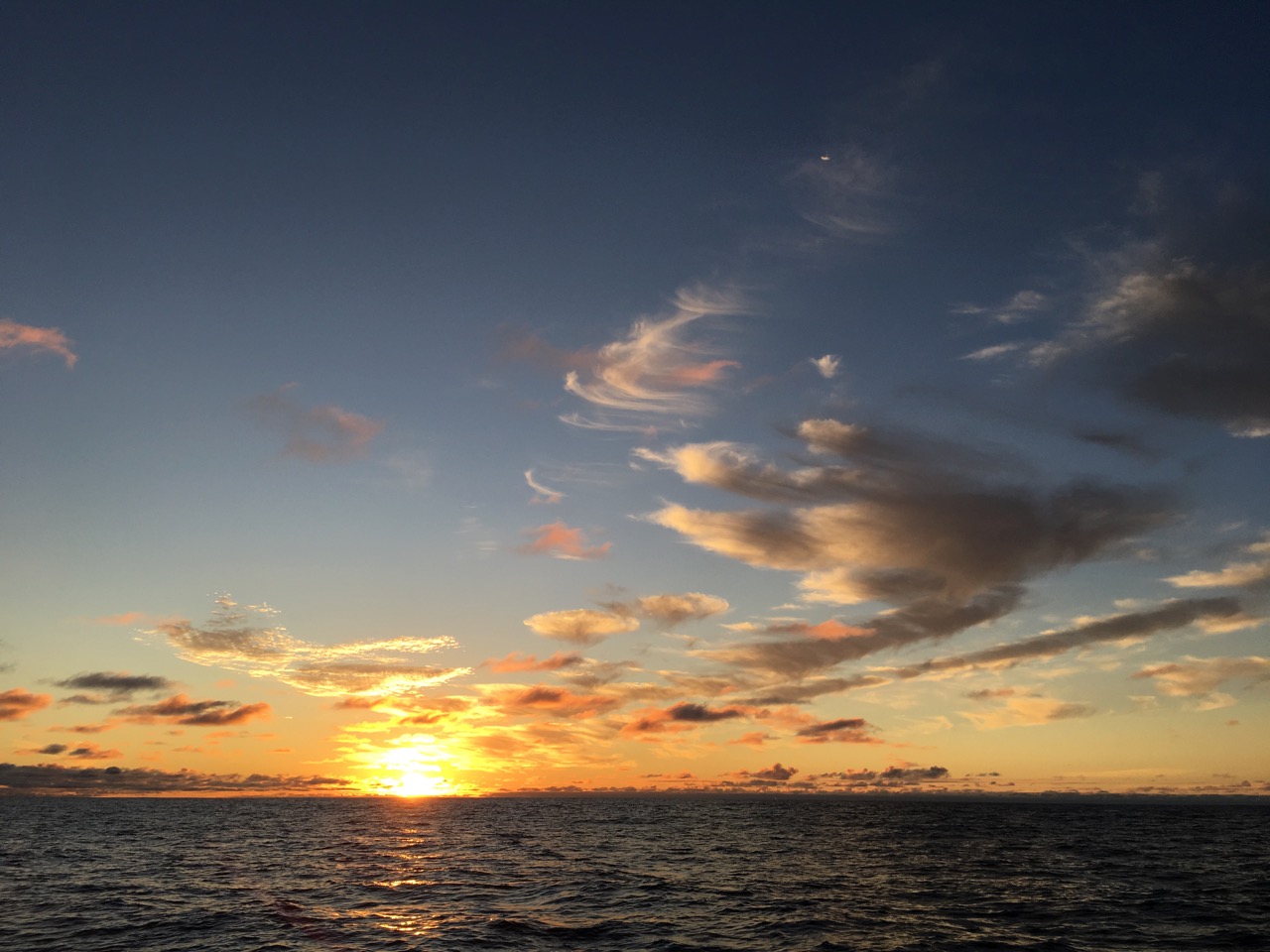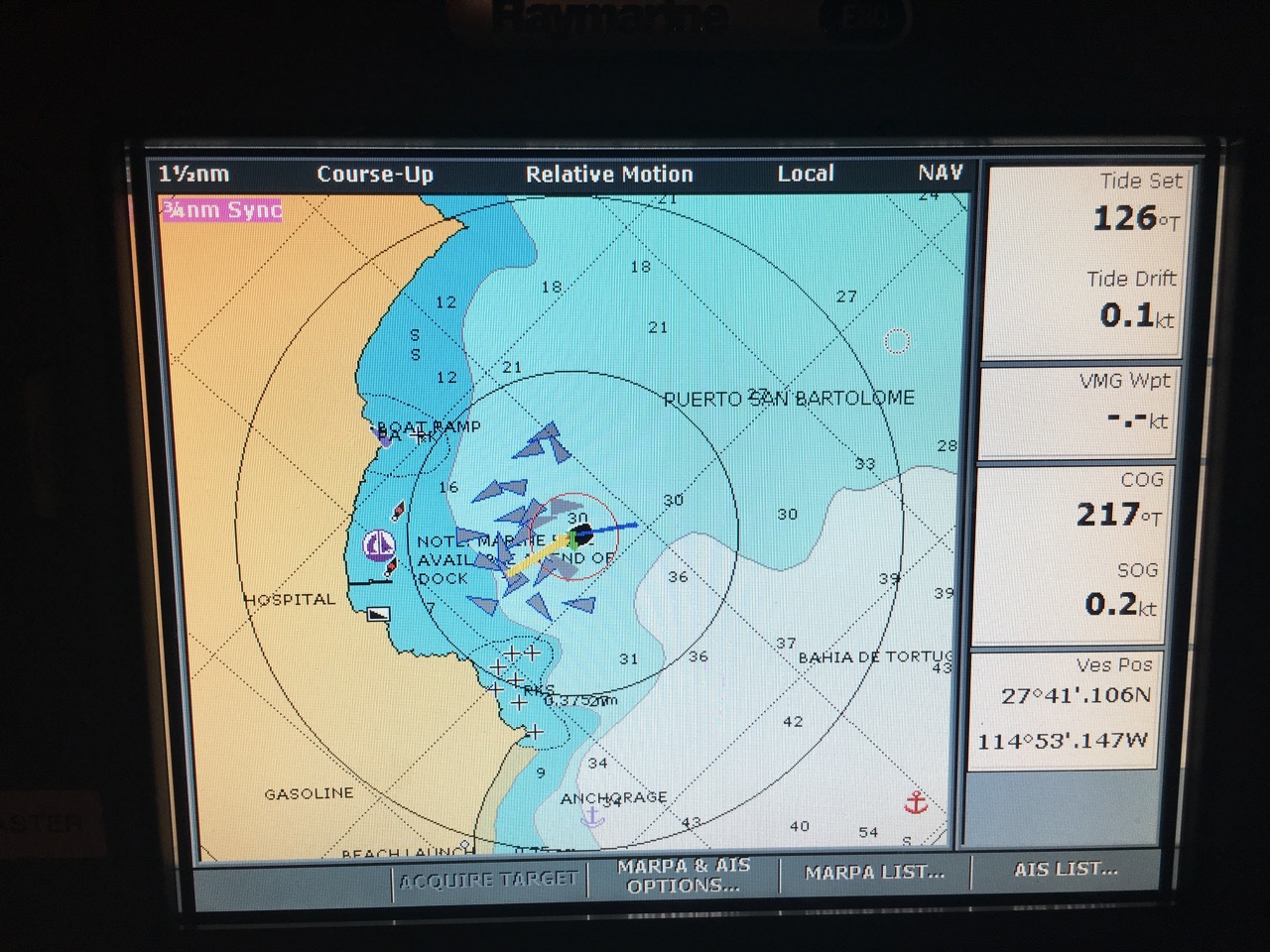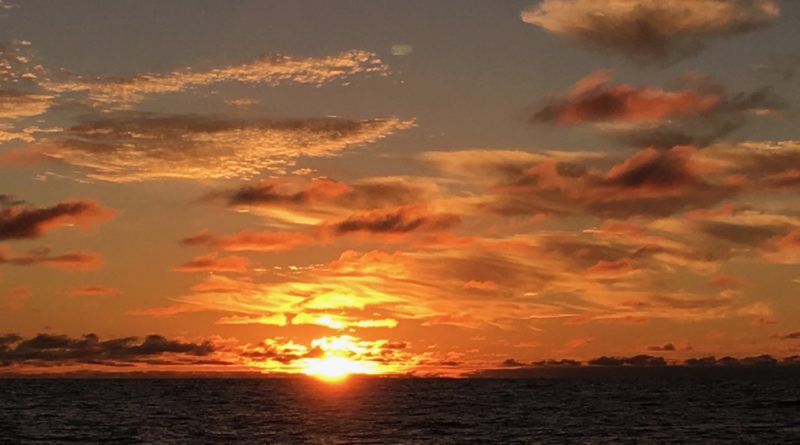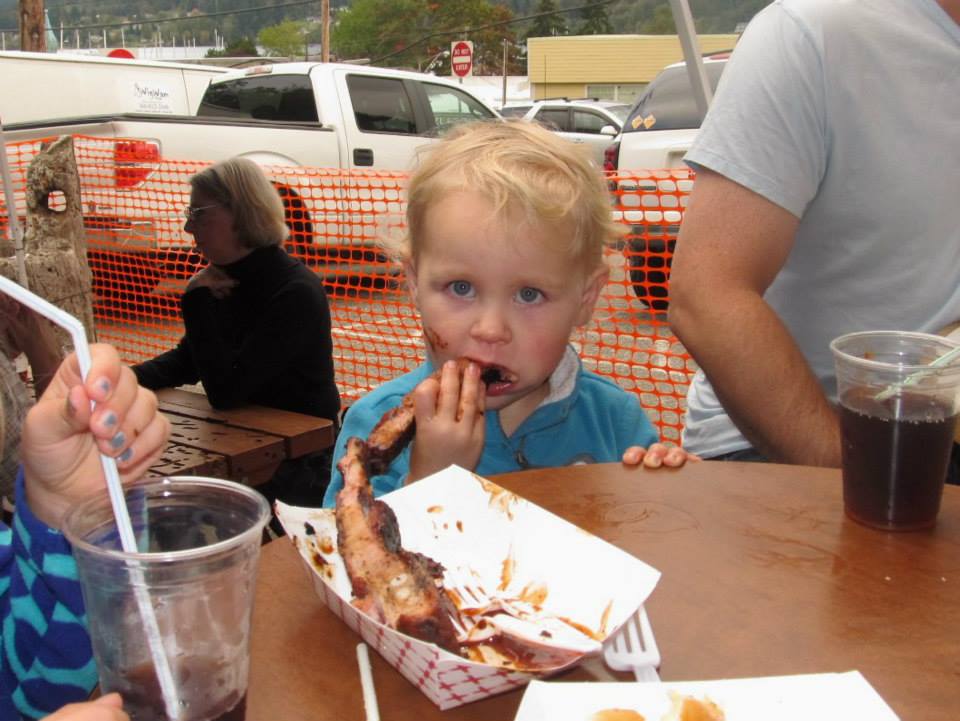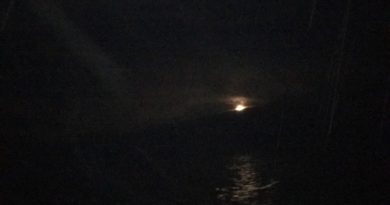Baja Leg 1: San Diego to Bahía Tortugas (Part II)
I wasn’t able to sleep much that night, and woke up groggy the next morning. It was overcast, but not too chilly. The kids were awake and playing, so I sat down to get their school assignment lists to them. It was several hours before they started working, but eventually, they got it done.
Just as they sat down to start their work, the noon kids’ net came on the radio. We were ahead of most of the kid boats, so we couldn’t hear most of the net, but we could hear the net leader (Violet on Sassafras), and Ashton had a good time trying to use the radio. Our radio skills and etiquette need work, but it wasn’t bad for a first try.
Shortly after the net ended, and the kids went back to their schoolwork, we got a bite on our fishing lure. What we pulled in was a prize: a bigeye tuna. This is one of the ahi tunas, and we made a fabulous poke out of it for lunch. It wasn’t a huge fish by any measure, but we only used half for a large poke lunch, and stashed away the other half for later.
Unfortunately, there still wasn’t any wind, so we continued to motor all day and throughout that second night. The day was grey, uneventful, lacking wind, and overall slightly depressing. After a very satisfying sausage and sweet potato hash for dinner, Rich went to bed early to take the swing shift, midnight to 4AM. Jason took the first shift, 8PM to midnight. I stayed up until 8 to put the girls to bed, and then went to bed myself so I could wake up at 3:45 for the 4AM – 8AM shift. For the second night in a row, I didn’t sleep well.
All was calm when I came on watch at 4AM, except that it had been raining most of the night, and the cockpit was drenched. Rich did a fabulous job of getting all the cushions out of harm’s way, stacking them up inside the dodger for protection. I also sat in the dodger, on top of the cabin roof, for most of my watch. Too tired to write, and having forgotten to bring my crochet with me, I entertained myself by reading the Active Captain notes about all the islands and bays we were passing.
By daylight it had stopped raining, but the skies were still grey, and everything wet. It was the start of another dreary, depressing, motoring day. Up ahead, more rain was on the horizon, shrouding Isla Cedros and the San Benitos in front of us. The islands came in and out of view for over an hour, until we were finally between them. Off to our left, on Isla Cedros, the rain poured down. We were eager to get through the channel before the rain drifted over us, but we didn’t dare speed up, because we were already using too much fuel as it was. So, we continued to plod along, just waiting for the rain to catch us.
Just then, the wind kicked up from the east. We didn’t put up the sails at first, because the wind had been teasing us for minutes at a time all night, so we figured this was just another trick. But after a few minutes, it was still blowing – time to put out the sails! We trimmed the main, and pulled out the jib. We continued motor-sailing, but the lift from the wind was just enough to drive us through the channel ahead of the rain cloud. When the rain was finally behind us, the wind died, and we furled the jib again. At least we’d gotten some sailing in.
Soon after, Jason pulled in several bonito on the hand line. I had filleted all the other fish, which is quite the chore on our boat. If we had a fish cleaning station in the aft on top of the Yeti cooler I want, filleting our fish would be easy – but as it is, we have to sit on the floor and fillet it in the wheel well, so that the blood can drain out the scuppers. It requires long periods of kneeling and bending over, and is rough on the legs and back. Most of the time, my legs fall asleep doing it. So, Jason filleted these three. We’d never had bonito before, so we lightly seasoned it up and put it on the grill. It was delicious. The texture makes it a fish not particularly prized, but the flavor is excellent. So, we put out the lines looking for more.
We weren’t disappointed. 30 bonito later (keeping 8), we were done fishing. I sacrificed our cockpit table for a fish-filleting station, and powered through the filleting. By the time we were done, it was nearly 5PM, and we were headed into Bahía Tortugas. It was a huge bay, and fit the 150 Ha-Ha boats easily. It could have fit several hundred more. But inside, the water was calm, and the breeze light.
We hadn’t finished anchoring when we were approached by a panga offering diesel. “Cuanto cuesta?” I asked in Spanish. “Six dollars,” the driver answered in English. We agreed, and the driver explained in surprisingly good English that there were two boats first, and then they would come to us.
By the time we got settled, it was dark, so we didn’t head to shore that evening. As the sun set, a large, nearly full moon loomed over near-bare dunes and mesas on the side of the bay opposite town. The sunset cast a red light on the desert hills, and we felt as though we were awaiting the second moonrise on Tatooine.
It had been dark for some time when our diesel delivery showed up. It was oh-so-accurately measured by sharpie marks every estimated 100L on their semi-opaque tank. But, the fuel seemed generally clean, and we felt we got a little more than what we’d bargained for, so we were happy. We didn’t fill the tanks, because it was just too expensive, so we only bought 100 liters. With that, we could motor all the way to Cabo if we had to.
With that, we had completed our first leg of the Baja Ha-Ha, and arrived at our first stop in Mexico. Thanks to all the motoring, our fatigue was minimal. Nevertheless, we all went to bed early and slept well.
